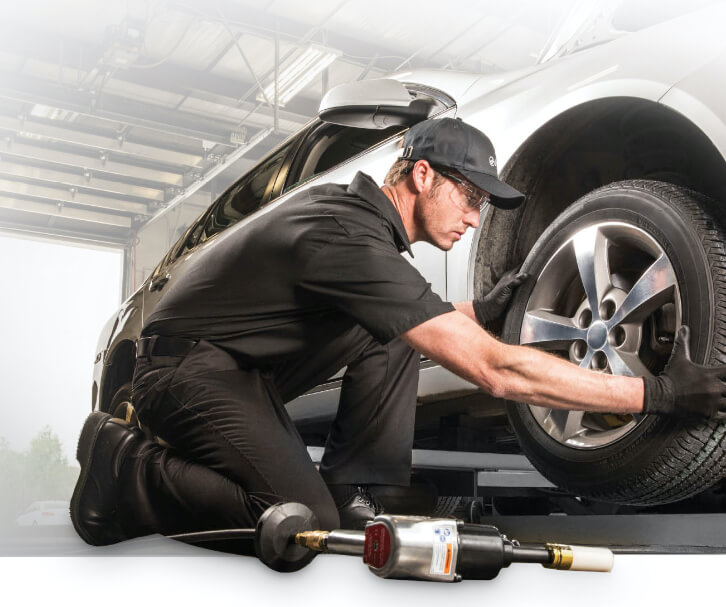Morris Tire Service: Dependable and Affordable Treatment
Morris Tire Service: Dependable and Affordable Treatment
Blog Article
Tire Repair Work Myths Debunked: Dividing Truth From Fiction
In the realm of automobile maintenance, tire fixing holds a considerable place, yet it is typically shrouded in misconceptions and misconceptions that can bring about confusion for lorry owners. Understanding the difference in between fact and fiction when it pertains to tire repair is crucial for making sure both safety and cost-effectiveness. From the misconceptions surrounding patching versus plugging a punctured tire to the performance of various tire sealants, there are several vital locations where clearness is required to make informed decisions. Allow's clarify some typical tire repair work myths and different them from the reality to empower you with the understanding required to navigate this essential aspect of vehicle maintenance.
Typical Tire Repair Service Misconceptions
Dispelling widespread misconceptions surrounding tire repair service is critical for preserving roadway safety and security and prolonging the longevity of your car's tires. One common misconception is the belief that a punctured tire is irreparable and needs to be changed completely. In reality, many leaks can be efficiently fixed by an expert, adhering to market criteria. It is necessary to recognize that not all leaks are produced equal; while some might without a doubt require a tire substitute, the bulk can be securely fixed.
Another mistaken belief is the concept that a do it yourself tire repair service set is an enough remedy for all tire issues. While these kits can be useful for short-lived fixes in emergency situations, they are not an irreversible option and might not address the underlying problem (morris tire). Seeking the experience of a certified tire professional is constantly suggested to make sure the safety and security and stability of the tire

Can You Repair a Punctured Tire?
Repairing a punctured tire is a typical method in the auto industry, frequently lugged out by specialist service technicians complying with details standards and standards. Leaks found on the walk location of the tire are usually repairable as lengthy as they are within a specific size limitation and do not influence the tire's structural honesty.
It is essential to keep in mind that penetrates near the sidewall or shoulder of the tire are generally not repairable as a result of safety problems. Such locations undertake significant anxiety and flexing, making fixings unreliable and potentially harmful. Additionally, if the puncture is as well huge, exceeding the advised i thought about this repairable dimension, or if the tire shows signs of internal damages, it is safer to change the tire completely.
The Reality Regarding Patching Vs. Connecting
When taking into consideration the repair work of a punctured tire, comprehending the differences between patching and connecting is vital for making notified choices relating to tire maintenance and security. Patching involves repairing the tire from the inside, where a spot is used to cover the slit.
Myth: All Tire Sealants Are Effective

When picking a tire sealer, think about factors such as the size of punctures it can effectively repair, compatibility with tire pressure tracking systems more info here (TPMS), and whether it is secure for the tire product. Bear in mind, while tire sealers can be helpful in emergency situations, they are not a substitute for appropriate tire treatment and upkeep.
Best Practices for Handling Flat Tires
Taking into account the differing performance of tire sealers, understanding finest techniques for taking care of blowouts is important for maintaining roadway safety and automobile performance. When running into a flat tire, the primary step is to securely pull over sideways of the roadway, away from approaching web traffic. Transform on hazard lights to alert other motorists of your circumstance. It is recommended to use the emergency brake and place wheel wedges under the tires to stop the automobile from rolling. Next off, consult your car's handbook to situate the spare tire, jack, and lug wrench. Before attempting to transform the tire, guarantee that the location is flat and steady. Loosen the lug nuts, increase the lorry with the jack, remove the lug nuts and blowout, and replace it with the extra tire. Tighten up the lug nuts in a celebrity pattern, reduced the automobile, and safely tighten up the lug nuts. Finally, stash the level tire, tools, and devices, and remember to inspect the extra Visit Website tire's stress regularly. Complying with these best methods can aid you deal with flat tires effectively and safely.
Final Thought
To conclude, it is essential to different truth from fiction when it comes to tire repair myths. Comprehending the reality concerning covering vs. plugging, the performance of tire sealants, and best techniques for dealing with punctures can assist guarantee the safety and security and longevity of your tires. By debunking typical mistaken beliefs and complying with proper repair guidelines, you can make enlightened decisions when it comes to maintaining the health of your lorry's tires.
Report this page